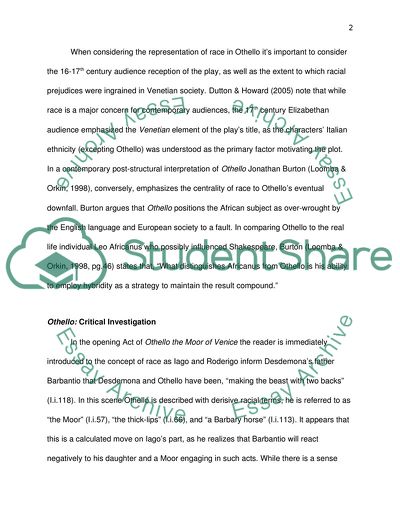Cite this document
(The Controversial Aspects of Othello and The Merchant of Venice Plays: Essay, n.d.)
The Controversial Aspects of Othello and The Merchant of Venice Plays: Essay. Retrieved from https://studentshare.org/performing-arts/1736616-compare-how-ideas-of-race-are-dealt-with-in-shakespeares-othello-and-the-merchant-of-venice
The Controversial Aspects of Othello and The Merchant of Venice Plays: Essay. Retrieved from https://studentshare.org/performing-arts/1736616-compare-how-ideas-of-race-are-dealt-with-in-shakespeares-othello-and-the-merchant-of-venice
(The Controversial Aspects of Othello and The Merchant of Venice Plays: Essay)
The Controversial Aspects of Othello and The Merchant of Venice Plays: Essay. https://studentshare.org/performing-arts/1736616-compare-how-ideas-of-race-are-dealt-with-in-shakespeares-othello-and-the-merchant-of-venice.
The Controversial Aspects of Othello and The Merchant of Venice Plays: Essay. https://studentshare.org/performing-arts/1736616-compare-how-ideas-of-race-are-dealt-with-in-shakespeares-othello-and-the-merchant-of-venice.
“The Controversial Aspects of Othello and The Merchant of Venice Plays: Essay”, n.d. https://studentshare.org/performing-arts/1736616-compare-how-ideas-of-race-are-dealt-with-in-shakespeares-othello-and-the-merchant-of-venice.


